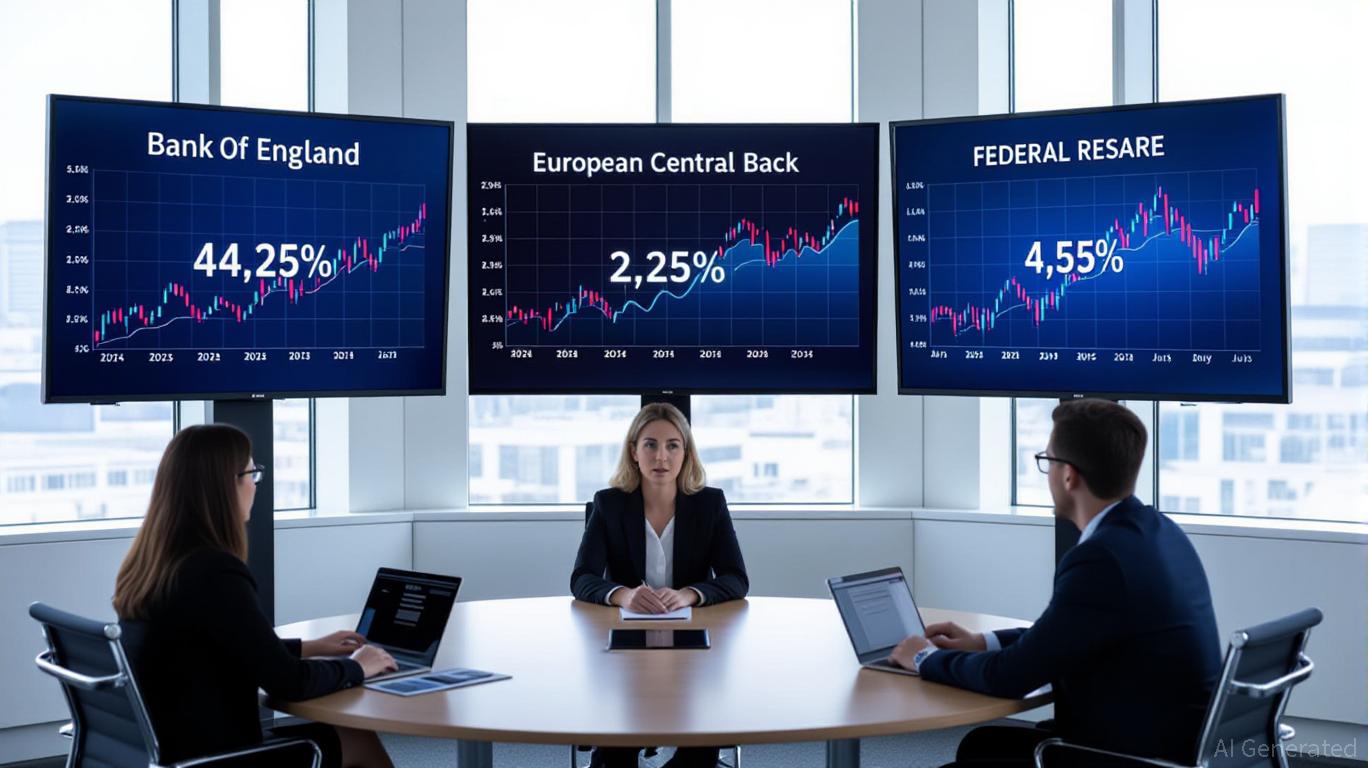
The global rate cycle has never been more fragmented. As central banks navigate a patchwork of economic signals, the British pound (GBP) has become a lightning rod for volatility. The Bank of England’s aggressive rate cuts, the European Central Bank’s measured easing, and the Federal Reserve’s stubborn hold on rates have created a perfect storm for currency positioning. But is this chaos a buying opportunity? Let’s dissect the numbers.
The Policy Divergence: BoE vs. Fed vs. ECB
The BoE has taken a “gradual and cautious” approach to easing, cutting rates by 25 basis points in May 2025 to 4.25%—its fourth cut since August 2024. This divergence from the Fed’s 4.25–4.5% target range has widened the yield gap, pressuring the GBP. Meanwhile, the ECB’s 25-basis-point cut in May brought its rate to 2.25%, the lowest since late 2022, as it grapples with euro strength and trade war risks. The Fed, in contrast, remains anchored, with markets pricing in no rate cuts until late 2025.
This policy divergence has created a “yield race to the bottom,” where the GBP’s appeal as a carry trade asset has diminished. The BoE’s own forecasts—citing peak inflation at 3.5% and a 4.4% unemployment rate—suggest a prolonged easing path, with rates expected to hit 3.5% by Q1 2026. For investors, this means the GBP is likely to remain under pressure against the USD and EUR unless economic fundamentals surprise to the upside.
Currency Positioning: A Bearish Trend with Nuance
The GBP/USD pair has depreciated to 1.3419 as of July 28, 2025—a 2.27% drop from its monthly high. Technical indicators confirm a bearish bias: the RSI is in overbought territory, and the pair has broken below key SMAs and trendlines. However, the CFTC Commitments of Traders report reveals a mixed picture. Large speculators hold a net-long position of 33,000 GBP contracts, while asset managers remain net-short. This divergence suggests a tug-of-war between short-term traders capitalizing on BoE dovishness and institutional investors betting on further depreciation.
Fundamentally, the UK’s economic struggles—services and manufacturing PMIs in contraction, retail sales underperforming—add to the bear case. Yet, the GBP’s 4.35% gain over the past 12 months hints at a long-term floor. The question is whether this 2.27% monthly drop is a buying opportunity or a warning sign.
Is This an Oversold Buy?
The RSI’s overbought reading might seem contradictory, but in a downtrend, overbought conditions can signal exhaustion rather than reversal. The GBP’s 1.3400 level—a Fibonacci 61.8% retracement—has held as support, suggesting a potential bounce. However, a break below this level could target 1.3340, with the 1.29 level looming as a 12-month target.
For a tactical buy, investors must consider two scenarios:
1. Short-Term Play: If the GBP/USD retests 1.3400 and holds, a mean-reversion trade could target 1.3520.
2. Longer-Term Bet: A sustained break below 1.3340 would validate the bear case, with the EUR/GBP cross (currently at 0.85) likely to rise further as capital flows to the Eurozone.
The Bottom Line: Caution Over Certainty
While the GBP’s depreciation reflects a clear policy-driven trend, it’s not a slam-dunk buy. The BoE’s dovish pivot, combined with UK economic fragility, suggests further downside. However, the 1.3400 support level offers a low-risk entry point for those willing to bet on a short-term rebound.
For the cautious, a wait-and-see approach is prudent. The Fed’s next rate decision and UK retail sales data in August could tip the scales. For the bold, a small position at 1.3400 with a stop-loss at 1.3340 might capture a mean-reversion trade. But remember: in a fragmented rate cycle, the only certainty is uncertainty.
Sterling’s volatility isn’t a crisis—it’s an opportunity for those who can separate signal from noise. Just don’t bet the house on a currency that’s dancing on a tightrope.
